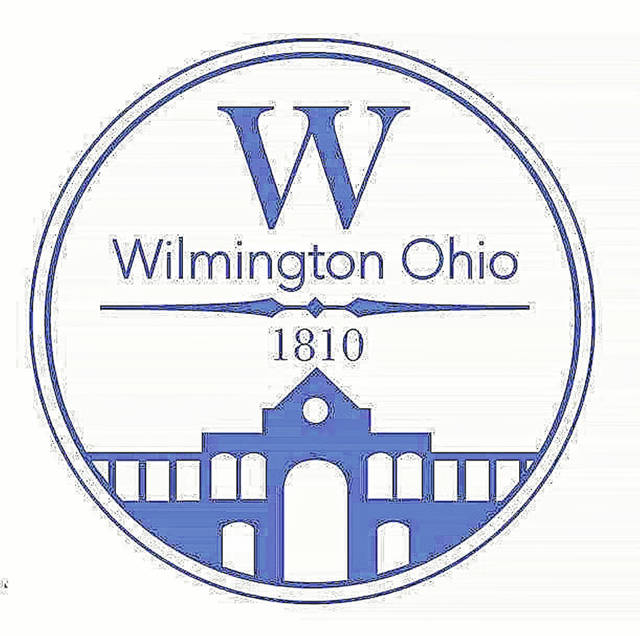
WILMINGTON — The City of Wilmington is addressing a two-pronged problem with a multi-faceted solution.
Many people don’t realize there are two networks of pipes draining water from homes and businesses – one for wastewater and one for stormwater.
The sanitary sewer system collects wastewater from sinks, toilets, showers and tubs inside residences and businesses and delivers it to the Wastewater Treatment Plant on Nelson Avenue.
The stormwater collection system drains rainwater and snowmelt from properties and streets, sending the flow to Lytle Creek and its tributaries.
The two piping systems are not supposed to meet. But because of leaking pipes, improper connections, and other issues, a large amount of stormwater is getting into the sanitary sewer system.
Through careful study and planning, modernizing both the wastewater and stormwater systems will cost the average residential property around $6 for stormwater control and a 2.5% rate increase for wastewater annually. This is the city’s first adjustment of wastewater rates in 12 years.
Contributing to the need for a system overhaul is the age and condition of the existing Wastewater Treatment Plant. It was last rebuilt in 1988 and still uses components from the original 1937 plant. Integral portions of the treatment process are failing.
“It has served our residents well, and is basically worn out,” said Public Works Director Rick Schaffer.
Until now, stormwater infrastructure expenses have been covered by the Wastewater Department’s budget.
“At best, that was an inappropriate source of funding,” said Brian Shidaker, City Director of Public Service and Public Safety. “The city has needed to correct that situation for a long time.”
After years of discussion and study, Wilmington City Council on Sept. 3 approved the formation of a separate Stormwater Utility, which will begin collecting fees from residents and businesses in July 2021. The fee will be included on the same bill as water, wastewater, and trash services.
The fee will be based on the amount of impervious surface – like buildings, asphalt, and concrete – within a property’s boundary line. An online database is being developed so residents and businesses can learn exactly how much their property will be charged. The database is expected to be ready by early November.
The stormwater fee will be used to shore up the piping system, identify improper connections to the sanitary system and complete other EPA-mandated activities. Over the past 20 years or so, at least 109 Ohio municipalities have implemented stormwater utilities, according to a Western Kentucky University survey.
To address the aging Wastewater Treatment Plant, Wilmington City Council in 2018 commissioned a study that led to a master plan being completed this summer. The plan calls for a new treatment plant to be constructed on City-owned property – the former Textron facility – directly across Nelson Avenue from the current plant.
The large amount of stormwater entering the sanitary sewer system complicated the question of how large the new wastewater plant needed to be.
“To accommodate the large amount of rainwater currently entering the sanitary system, a huge treatment plant would be needed and a vast array of tunnels would have to be constructed throughout town,” said Schaffer. “That would have been extremely expensive and resulted in a large part of the City being torn up over the next 10 years or so. No one would have liked that combination.
“It became apparent that the stormwater problem needed to be attacked, to avoid the need for extremely large capital projects,” Schaffer said. “So, we presented the stormwater utility and the wastewater master plan concurrently – first to the Public Works Committee and then to full City Council – in August and September.”
Council approved a new wastewater rate structure that includes 2.5 percent annual increases starting January 1, 2021, and continuing through 2025. Annual increases of a similar size are expected to be needed for several years after that, Schaffer said, depending on the final cost of the new plant.
“The Wastewater Department employees have done an outstanding job of operating and maintaining the existing plant without the need for a rate increase for 12 years,” Shidaker said. “Many other cities have had average annual rate increases of 3 to 5 percent over that time.
“We are going to have a new plant at the end of this and will still have wastewater rates near the average for this part of Ohio,” he said.
The proposed plant would be designed to handle an average of 50 percent more water than the current one. It will also be better equipped to handle high-flow episodes, and can be expanded relatively easily, Schaffer said. City officials are currently seeking an engineer to begin the design process.
The stormwater efforts in combination with the wastewater plant will position the City for growth.
“Removing the rainwater from the sanitary system has the effect of increasing the capacity of the sanitary system,” Schaffer said. “And with the larger treatment plant, Wilmington will have additional opportunities for new industry.”


